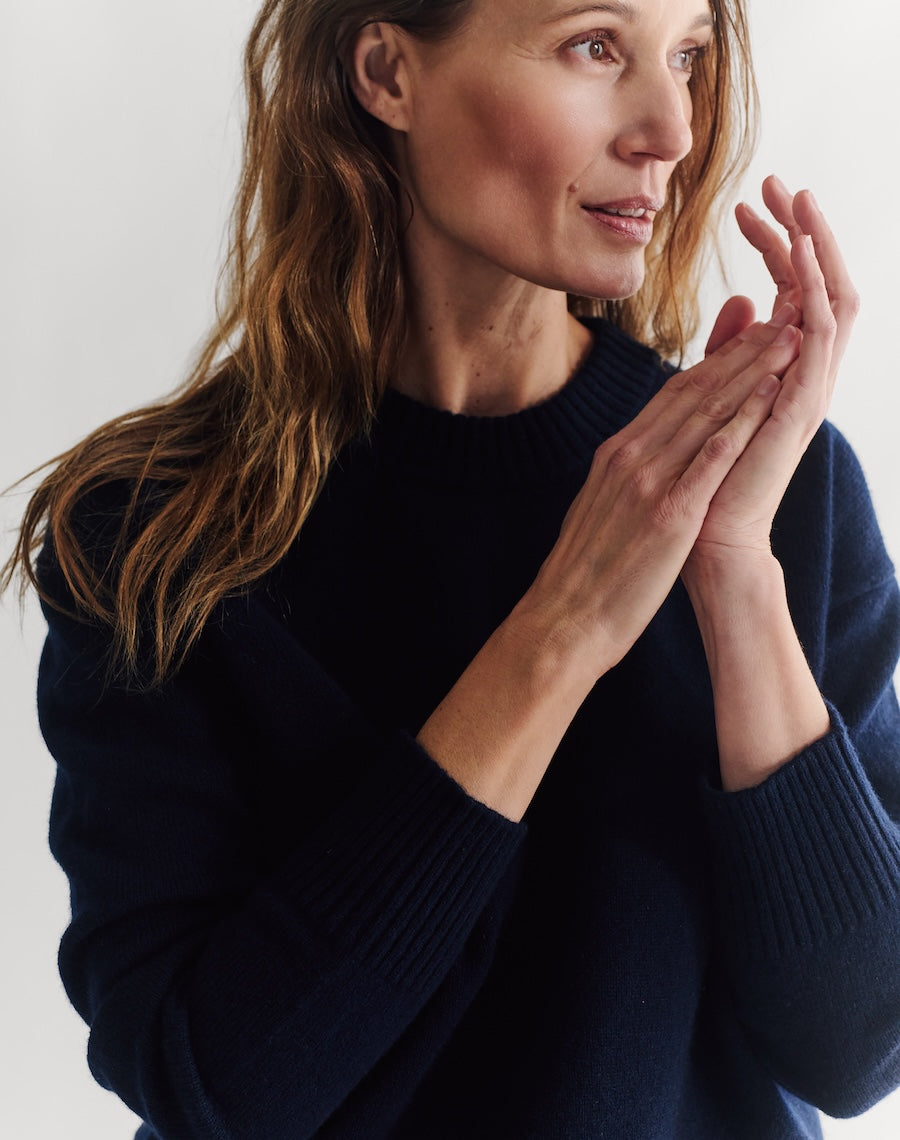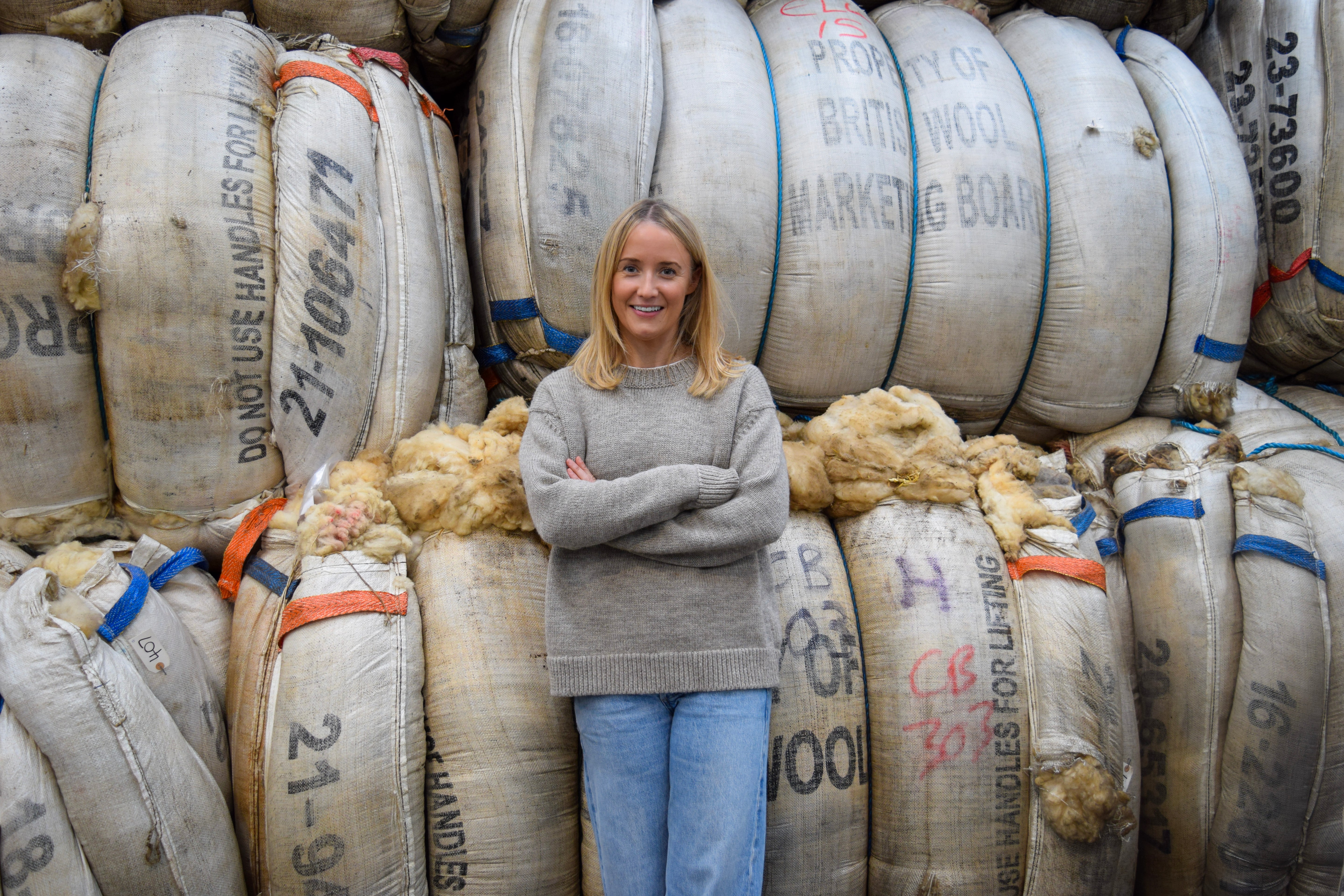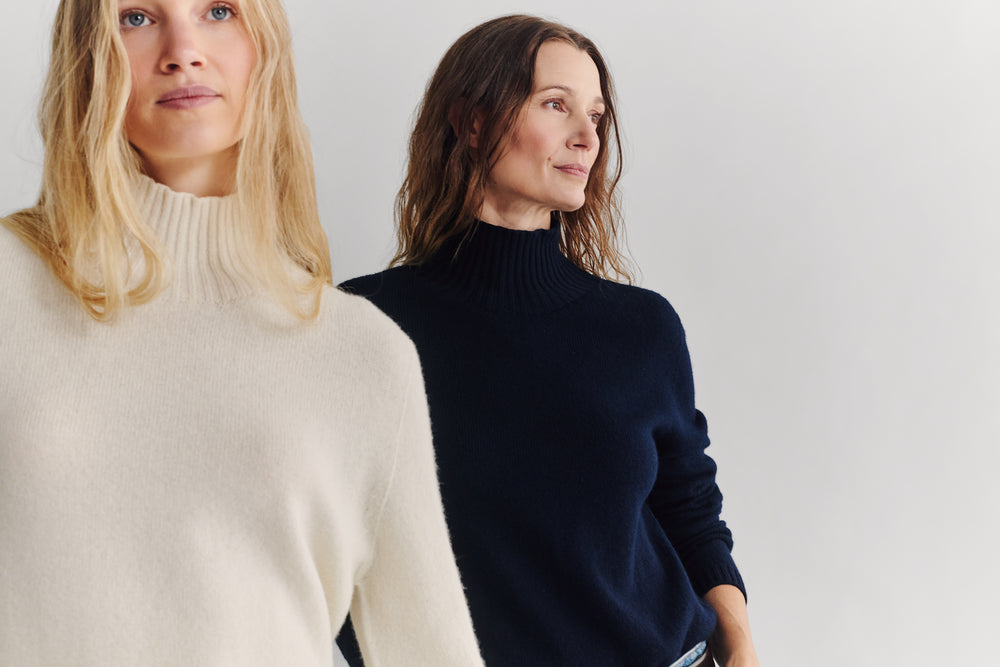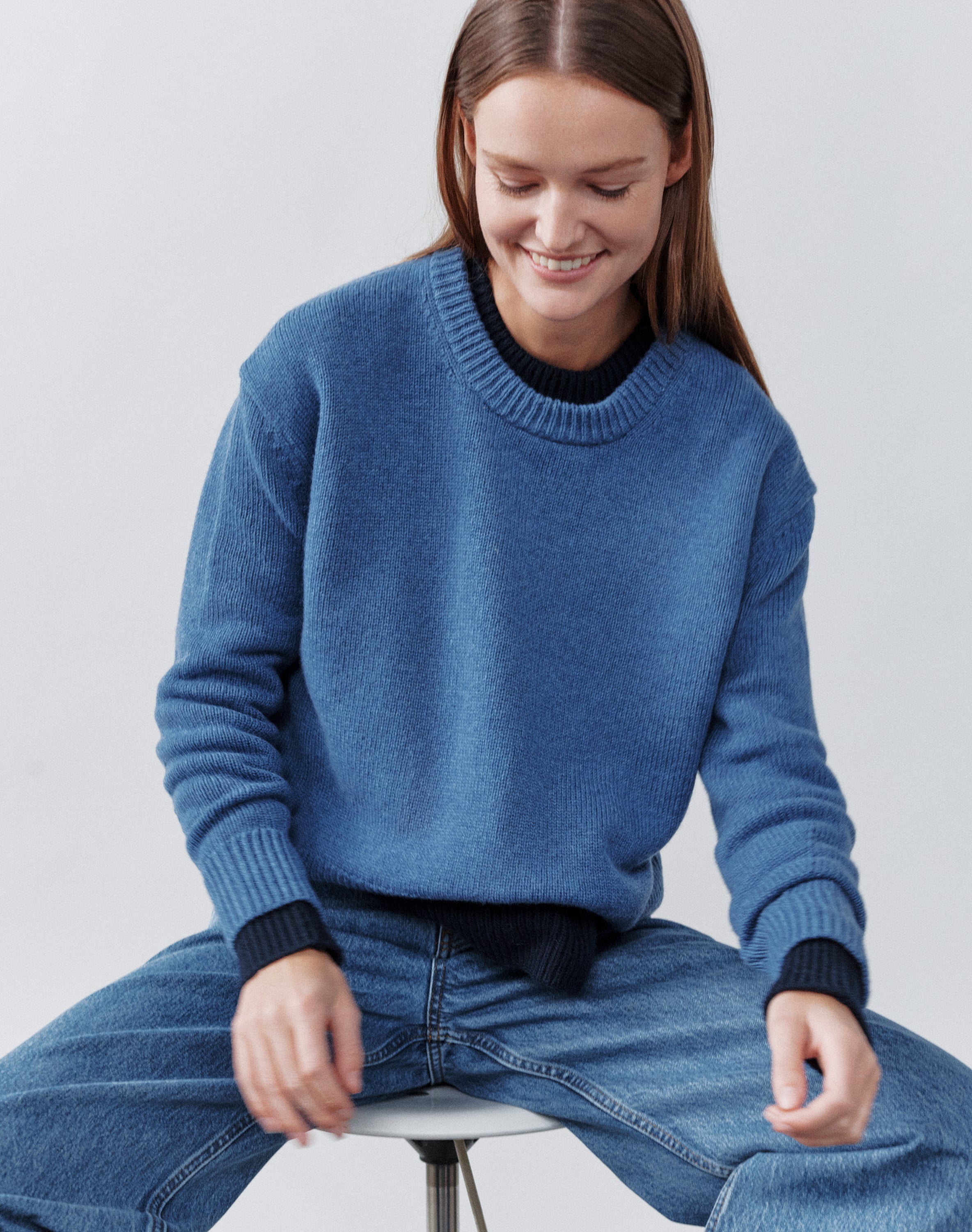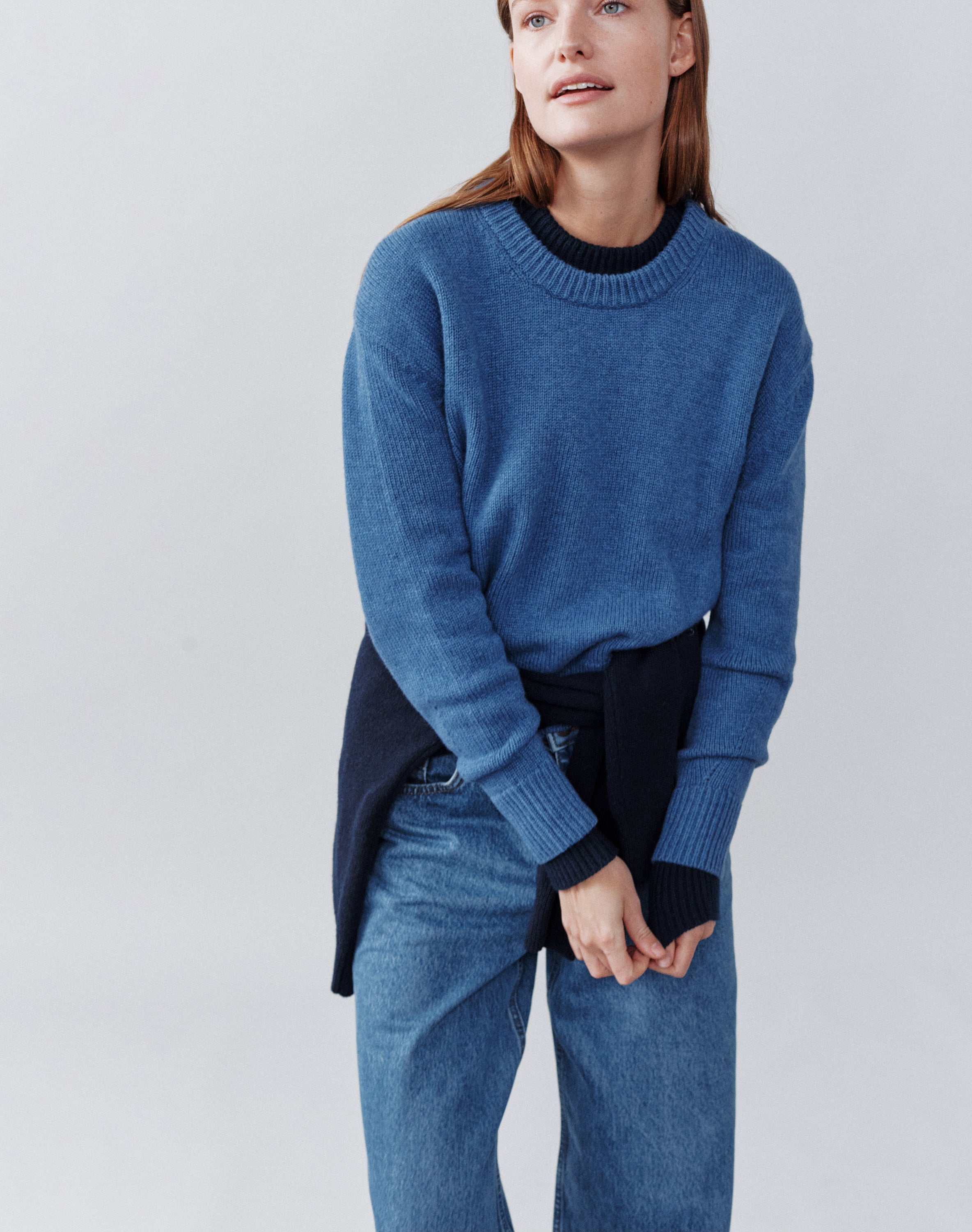Circularity is not a new idea, but it does have the potential to drastically improve our relationship with the Earth. But what is circularity? And what does it mean for fashion?
In a nutshell, circularity means putting an end to waste. Circular products either biodegrade or can be recycled time and time again. As Ellen Macarthur explains, it’s "a restorative model in which waste does not exist as such but is only food for the next cycle."
Take our jumpers. Each one is made to last. But at the end of their lives, they will naturally biodegrade, returning nutrients back into the soil. Enriched soil can then sustain new life, including the grass that feeds sheep. Those sheep will grow the wool to make new jumpers. And so the cycle continues. Natural fibres alone is not enough
Natural fibres alone is not enough
Quality is crucial to circularity. When it comes to fashion, garments need to to be made from 100% natural fibres. But that alone isn't enough. They need to be repairable and easy to care for. And both brands and consumers need to be willing to invest in that aftercare.
For a product to be truly circular, each step of the manufacturing process also needs to be considered. A pure 100% cotton T-shirt might be biodegradable, but if it’s leaving behind plastic bags, tags and hangars, along with polluted rivers and soil contaminated with pesticides, it is not circular.
Sadly and frustratingly, too many fashion brands will simply label something as 'sustainable' because it is made from 100% natural fibres. And while yes, natural fibres are better than man-made fibres like polyester (which still accounts for 52% of fibres in clothing), it is not a silver bullet. And it does not tell the full story.
What's more, if it has been made by people who have not been paid a fair wage, from the wool farmers or cotton farmers to the knitters and makers, then that adds to the cycle of overconsumption of cheap, throwaway fashion.
New products will always have some impact on the Earth. But by using biodegradable dyes, reducing air miles, avoiding plastic packaging, paying workers a fair wage, and so on, we can limit that impact as much as possible.  While most of the emphasis is on brands, growers and manufacturers to create circular products, we as customers play a role too.
While most of the emphasis is on brands, growers and manufacturers to create circular products, we as customers play a role too.
The first step is choosing circular products. Whether you’re buying a pair of jeans or a new jumper (or even just a packet of tea), you can choose to support the circular economy. You can then keep your new product in use for as long as possible, by looking after it, caring for it and passing it on when the time comes for change.
And, when that product is no longer usable, you can help it to move to the next stage of the cycle. That might mean recycling it, or it might mean returning it to the earth.
Disposing of your old jumper
100% biodegradable garments can be cut up and added to your compost heap
when they’re no longer wearable. Prince Charles actually buried two old jumpers in a flower bed to demonstrate the difference between wool and synthetic materials. Six months later, the synthetic jumper was intact while the woollen jumper “had quietly and usefully biodegraded itself away to nothing.”
We’d disagree with Prince Charles on one point though. The woollen jumper hadn’t just disappeared. Because nothing ever really ends. Depending on what it’s made from, a jumper will either remain as waste material, of little value and potentially creating harm, or it will regenerate, creating new life and endless value.
So Prince Charles’ wool jumper would have lived on, adding vital nutrients to the soil to help his flowers to grow. In turn, those flowers would have returned their energy back to the soil. An endless cycle.
To us, that’s one of the most beautiful things about a wool jumper. It’s the circle of life in action.
